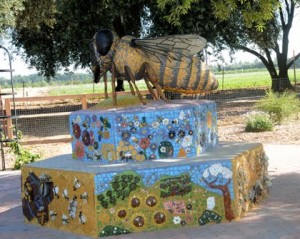http://www.cdfa.ca.gov/egov/Press_Releases/Press_Release.asp?PRnum=12-032
The California State Board of Food and Agriculture will discuss a variety of water issues at its upcoming meeting on September 11, 2012. The meeting will be held from 10 a.m. to 3 p.m. at the Spreckels Sugar Company facility, 29400 West Whitesbridge Road, Mendota, CA 93460.
“California farmers are at the forefront in developing on-farm solutions to improve water quality and ground water management,” said CDFA Secretary Karen Ross. “How we work together to improve the already strong strides agriculture has taken in this area, while recognizing the significant financial constraints that farmers operate under, is where our water discussions need to focus.”
California is the largest agricultural state in the nation, representing more than 11 percent of total U.S. agricultural production. The Center for Irrigation Technology at California State University, Fresno estimates that statewide dedicated water use for agriculture is around 40 percent with environmental and urban uses representing the balance. Within the agricultural sector, challenges related to water quality, water availability, and supply remain paramount. In 2010, a diversity of stakeholders developed a long term plan for California agriculture – the California Agricultural Vision – which outlined two strategies related to water sustainability. These strategies, securing an adequate supply of water for agricultural purposes and adopting a policy conserving agricultural land and water resources, is a framework that the state board continues to pursue and discuss.
Scheduled speakers include: Jennifer Lester Moffitt (board member), Central Valley Regional Water Quality Control Board; Michael P. Jackson, Area Director (South-Central California Area Office), Bureau of Reclamation, Mid Pacific Region; Peter Gleick, The Pacific Institute; Cindy Tuck, Association of California Water Agencies; Sarge Green, California Water Institute; Tom Glover, Westlands Water District; Martin McIntyre, San Luis Water District; Paula Landis, California Department of Water Resources; Ray Veldhuis, Central Valley Dairy Representative Monitoring Program; Stephen Bock, Fresno County Office of Education; and Jason Dean, Meyers Farming.
“The State Board continues to emphasize the proactive steps California’s farmers are taking on agricultural lands to address key water policy issues,” said Craig McNamara, President of the California State Board of Food and Agriculture. “How we can advance the discussion on water markets and ground water management is really the focus of our upcoming meeting as well as looking at opportunities to improve overall water quality.”
The California State Board of Food and Agriculture advises the governor and the CDFA secretary on agricultural issues and consumer needs. The state board conducts forums that bring together local, state and federal government officials, agricultural representative and citizens to discuss current issues of concern to California agriculture.
Follow the board on Twitter at: www.twitter.com/Cafood_agboard






